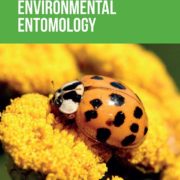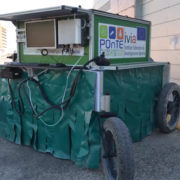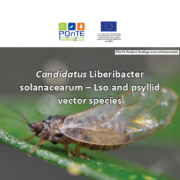Zebra chip disease: Portable diagnostic tool breakthrough aims for fast, accurate results
Zebra chip is a bacteria which alters a plant’s metabolism and burns striped patches in potatoes, making both the potato and its seed inedible and unmarketable. It is mainly spread by infected tomato potato psyllids, a pest which was detected in Perth last week in a first and devastating blow for Australian biosecurity.
Dr Grant Smith is a plant pathologist with the Plant and Food Research institute in New Zealand and has been working on the development of the tool. He said current tests were not accurate enough.
“Because they’re relatively new pathogens we don’t know an awful lot about it so we don’t understand quite what the genetics, what the population structure is, of this bacterium,” Dr Smith said. “What we’ve been doing is getting hold of as many different samples of this bacteria from around the world.
“So we’re collaborating with colleagues in the US, in Finland, in France, and making sure that we develop diagnostics that are very, very specific for the ones that infect … the class of plants that potato belongs to. “That includes capsicums, tomatoes, things of that nature. The Solanaceae plant.”
Plant and Food Research have been using a genomic approach to develop the new diagnostic tool.
“It uses a lot of sequencing of DNA, and using fairly powerful software tools — what’s called bio-informatics — to identify these regions which are very, very, very unique to this particular bacteria,” Dr Smith said.
According to Dr Smith, the new technology would also be portable and cut waiting times from two-three days to roughly 30 minutes.
“What we’re trying to do is also take where the current tests are, which rely on being run in reference laboratories on clearly sophisticated machines … and transfer them into in-field diagnostic test which can be run on little, portable [devices],” he said. Dr Smith said this reduced time-frame and portability would be particularly important for delimitation surveys when trying to define infected areas and distance of spread.
“So if you’re particularly trying to … say ‘this is the area that’s affected’, you can do that very, very rapidly,” he said.
Potato growers have welcomed the news of the new diagnostic tool.
One week after the pest was detected and exports were halted, potato producers were starting to feel the impact. P Ayres and Sons co-director Colin Ayres had to hold 1,500 tonnes of potato seed which was due to be exported to South Australia. He said the new diagnostic tool would be helpful, but would not be an overall solution to the infection’s devastating effects. “Any new technology is a good thing, that it increases the reliability of detection,” he said.
“It wouldn’t have made any difference up until this point in time, but could well help … to clear the way for exports to resume back to other states of Australia, and in fact other international markets.”
Mr Ayres said that with the amount of international air travel and container shipping, biosecurity across Australia and internationally needs strengthening. “[In] the general issue of biosecurity, this would have to be a ‘shutting the gate after the horse has bolted’ job,” he said. The diagnostic tool is not yet ready for use, however Dr Smith believed it would become available for use in six to nine months.
“Unfortunately with where our science is right now, we’re still working on getting that test up and running so it can be used in a field situation,” he said.
“Like most science we’re still working our way through all the little wrinkles and parameters that we need to get right.”
Originally published on February 21, 2017 by ABC RURAL








